A deep travel overview of Kyushu for my custom Japan private tours
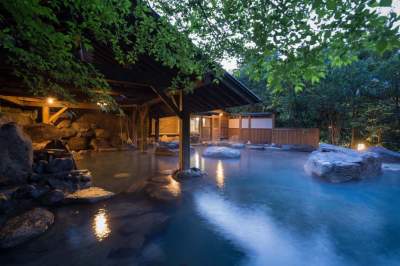
Kyushu Island, the 3rd largest island in Japan, almost touches South Korea, and is thus considered to be the oldest part of Japan. Even Japan's primary Sun Goddess, Amaterasu, is said to have first descended to Kyushu. It is generally accepted that Japanese history and civilization was strongly influenced by the kingdoms of the southern Korean peninsula (and thus China via Korea). Most of my Kyushu clients are from Southeast Asia (Philippines, Malaysia, Singapore) and almost all of them travel exclusively with my super-useful independent self-guided tours & services. However, there are always clients and traveler types that do require guides and I provide access to good local tour guides in all of Kyushu’s major centers: please inquire.
Kyushu Island is very mountainous and home to Japan's most active volcano, Mount Aso. This has also given the island some of the finest onsen hot spring towns in the country (notably Kurokawa and Yufuin).
A bullet train from Kyoto can get you to the top of Kyushu (Hakata) in less than 3 hours by shinkansen. Kagoshima, at the southern tip of Kyushu, is 4.5 hours from Kyoto by bullet train. Kagoshima is the ferry departure point for the amazingly wild and mysterious island of Yakushima (unbelievable!).
The largest population centers of Kyushu are on the north coast (Nagasaki, Fukuoka, Kita-Kyushu) leaving a huge part of the island largely undeveloped.
Most of Kyushu is remote, mountainous and well off the beaten track. As with any mountainous travel destination, a little extra time is required the further inland you go. Kyushu has some really spectacular natural attractions. The Takachiho Gorge in spring or autumn is a dream.
The climate of Kyushu is different without the cold damp winters of Kyoto or Tokyo. Parts of the island are subtropical (Miyazaki Prefecture and Kagoshima further south). So winter is always mild and warm compared to the big city centers of Honshu (like Tokyo, Nagoya, and Osaka).
Japan is known to be the oldest clay vessel production center in world history and nearly all this primitive Japanese cultural development was centered in Kyushu (the Jomon people). For this reason, Kyushu has an astounding range of attractions for those passionate about porcelain ceramics (concentrated mainly in Arita, Imari, Satsuma, and Karatsu).
Kyushu is also part of the Star Wars legend. Kyushu is the Western Empire and home to the resistance (the good guys). Darth Vader is the Shogun of Edo (Tokyo) and as hard as he tries, the western edge of centralized Japan remains beyond his reach. Ultimately, the rebel clans of Kyushu and western Shikoku overthrow the shoguns in 1867 and change Japan forever. [Aside: George Lucas has visited the Zen gardens of Kyoto (and probably the best hot springs in Kyushu). His SkyWalker Ranch is a copy of the Ryoanji Temple stone and gravel Zen garden.}
For a better understanding of YJPT's tour and service design and design process, expenses, and prices please see my compact but informative full service pricelist in JPY and USD, all retail priced.
Because of its defiant and anti-establishment views, Kyushu is today considered to be where the most macho and sexy Japanese men live. Many of Japan's leading post WWII fortunes were built by great men from Kyushu (including Softbank's Masayoshi Son).
The northern edge of the island is home to a number of Japan’s most modern and sophisticated production facilities. The world's biggest, state-of-the-art, Lexus car manufacturing plant is in Kyushu.
Your Japan Private Tours has designed many trips to Kyushu (mostly for clients from the Philippines, Singapore, Hong Kong and Malaysia) and most of them traveled to the best places in Kyushu almost exclusively with my unique independent self-guided tours & services. I would love to help you if your journey and your passions take you to Kyushu.
Guided tour FAQs (start time and location; itinerary design; expenses; tips . . .). Self-guided tour FAQs (design; delivery; types; expenses . . .).
- Kyushu private travel transportation and accommodation overview
- Kyushu main hiking, nature and hot spring destinations
- Kyushu food & cuisine overview for private travel
- Kyushu history overview
Content by Ian Martin Ropke, owner of Your Japan Private Tours (est. 1990). I have been planning, designing, and making custom Japan private tours on all five Japanese islands since the early 1990s. I work closely with Japan private tour clients and have worked for all kinds of families, companies, and individuals since 1990. Clients find me mostly via organic search, and I advertise my custom Japan private tours & travel services on www.japan-guide.com, which has the best all-Japan English content & maps in Japan! If you are going to Japan and you understand the advantages of private travel, consider my services for your next trip. And thank you for reading my content. I, Ian Martin Ropke (unique on Google Search), am also a serious nonfiction and fiction writer, a startup founder (NexussPlus.com), and a spiritual wood sculptor. Learn more!
Kyushu private travel transportation and accommodation overview
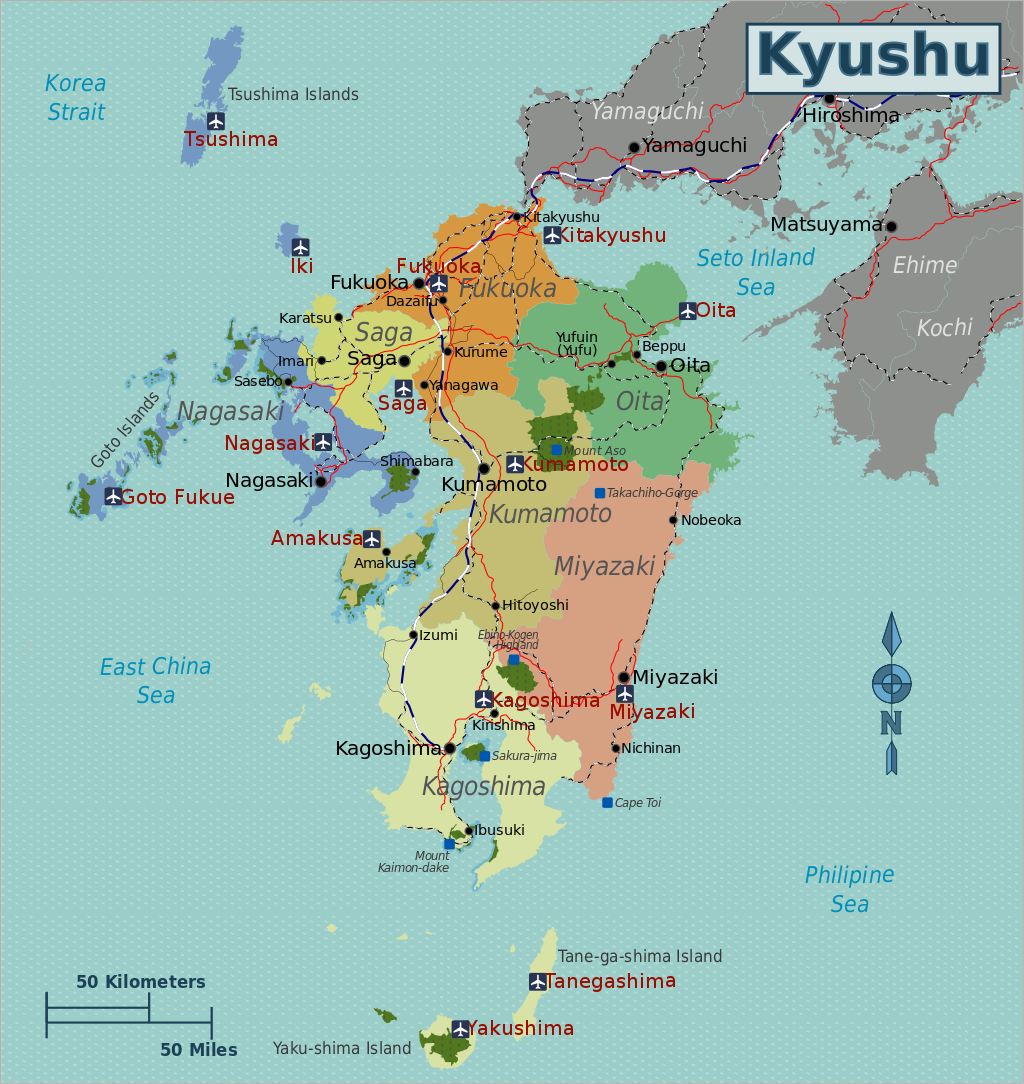
Kyushu transportation is great in every way. Many southeast Asian travelers fly directly to Kyushu or its southern territory, Okinawa, which has direct connections from Seoul, Shanghai, Hong Kong and Taipei. Fukuoka International Airport is served by many southeast Asian airlines and located almost in the city. There are also regional airports in Oita, Nagasaki, Kagoshima, Kumamoto and Miyazaki.
Most foreign travelers arrive in northern Kyushu on the bullet train from Osaka | Kyoto or Hiroshima. The bullet train system's western end is Hakata (in Fukuoka) and then there is one more bullet train line running from Fukuoka that goes south, along the west side of Kyushu, to Kumamoto and from there to the southern terminal station of Kagoshima (access to Yakushima!). Fukuoka and Nagasaki are connected with the sleek and very fast Momome trains. One west-east train line crosses Kyushu from Kumamoto to Beppu and passes towns just north of Mount Aso. The private Minami Aso Railway operates on the south side of Mount Aso. High-speed highway buses also travel almost hourly from west to east between Kumamoto, Kurokawa, Yufuin, and Beppu.
- Kyoto to Hakata (Fukuoka): 2 hours 45 min by bullet train
- Fukuoka to Beppu: 1 hour 40 min by train
- Fukuoka to Nagasaki: 2 hours by Momome train
- Fukuoka to Kumamoto: 40 min by bullet train
- Kumamoto to Yufuin: 2-3 hours by train; 4 hours by highway bus
- Kumamoto to Kagoshima (entry to Yakushima): 1 hour by bullet train
- Beppu to Yufuin: 1.5 hours by train
- Beppu to Kagoshima: 4 hours by train
- Kagoshima to Nagasaki: 3.5 hours by bullet train and train
For adventurous travelers and car rental travelers, Kyushu also has an extensive short-haul ferry system linking it to Shikoku to the east, and also to Kobe and Osaka further east. Fukuoka is connected to Busan, Korea with a daily hydrofoil service. There are ferry services operating to and from Beppu (with connections to Osaka, Kobe, and Matsuyama). There is also a ferry service to Miyazaki from Osaka and from
Kitakyushu (just east of Fukuoka) to Osaka. There is also a ferry from Kumamoto to Shimabara (30 km east of Nagasaki City). From the southern city of Kagoshima, A-Line and Marix ferries depart for Naha, Okinawa. There are jetfoils (and ferries) from Kagoshima to the wild island of Yakushima, and ancient Tanegashima Island.
Kyushu accommodation for private tours & travel
For private travel and private tours of Kyushu my 30 years of experience suggests that in big cities hotels and inns are easy to book online. However, when it comes to local Kyushu accommodation, especially in onsen villages and in hiking areas, a little help is often asked for from my clients. I have booked small inns, minshuku B & Bs and high-end hot spring resorts all over Kyushu and can offer you a variety of high-quality options that perfectly suit your family's overnight preferences. Just let me know what you are looking for and I will find it, including budget limited choices.
- Kyushu private travel transportation and accommodation overview
- Kyushu main hiking, nature and hot spring destinations
- Kyushu food & cuisine overview for private travel
- Kyushu history overview
Kyushu main hiking, nature and hot spring destinations
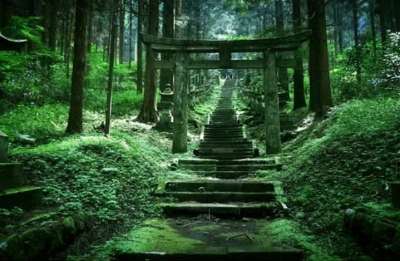
Kyushu is the third largest Japanese island and covers an area almost as big as Switzerland. The island has a population of roughly 13 million mostly concentrated at the north end of the island (Fukuoka, Kita-Kyushu, Nagasaki). Kyushu is mostly mountainous and has the most active volcanos in Japan. The volcanic activity in Kyushu is the reason the island is known as the number one destination for hot spring onsens in the country. However, Kyushu is also famous for its waterfalls, tropical climate (mango and palm trees), and the ancient cedar forests of Yakushima. And Kyushu’s coastal areas are home to sea turtles and dolphins.
For a better understanding of YJPT's tour and service design and design process, expenses, and prices please see my compact but informative full service pricelist in JPY and USD, all retail priced.
Kyushu is also the “oldest” island in Japan and the area where ideas and culture from Asia and the West first entered Japan. This means that there are many old villages, shrines and temples in areas where few people live but many tourists go to. Top hiking spots in Kyushu: Mount Aso (inland from Kumamoto City), the Kuju Mountains (near Kurokawa hot spring town), Mount Yufuin (on the edge of Yufuin Village), and the Kirishima Mountain landscape (Kagoshima, south Kyushu). Top hot spring villages in Kyushu: Beppu (the largest in Japan but also very developed), Kurokawa (not cheap but very special) and Yufuin (between Kurokawa and Beppu). Top beaches & coastal areas in Kyushu: 1. The Amakusa islands, a remote rural area just south of Kumamoto is known for its lush greenery, natural geological formations and wild dolphins. 2. The Nichinan Coast is one of Kyushu’s most rugged coastlines and known for its exquisite beaches and laid-back lifestyle. 3. Cape Toi, southern Miyazaki, is popular for pristine sea views, wild horses originally bred for local samurais, and relaxing open-air atmosphere. Best villages and old-world Japan locations in Kyushu: 1. Obi Castle Town (Miyazaki) offers time travel through streets of preserved samurai houses featuring luxurious old traditional Japanese gardens. 2. Takaharu Town (southwest Miyazaki) is home to Mount Takachiho-no-mine, the sacred mountain where Japan’s first gods descended to earth (Note: Takachiho Gorge is located in the northeastern part of Miyazaki, even though the name is similar to the sacred mountain). 3. Hoshino Village (south of Fukuoka) is famous for its terraced rice fields, tea plantations and charming farmhouse landscapes. 4. The volcanic Ojika Islands (17 in all) are easy to get to from Nagasaki and offer an ancient and wild environment that is truly unique.
- Kyushu private travel transportation and accommodation overview
- Kyushu main hiking, nature and hot spring destinations
- Kyushu food & cuisine overview for private travel
- Kyushu history overview
Top destinations in Kyushu by prefecture
Fukuoka Prefecture: Fukuoka City: Fukuoka is by far the primary entry point to Kyushu for international travelers arriving by air, bullet train and ferries (from Korea). However, Fukuoka in the most general sense is an arrival city and most travelers only spend a day or two there before departing to the more exotic and nature dominated destinations of Kyushu. Fukuoka is a modern cuisine paradise with many traditional cultural sites on offer. Dazaifu: Historic Dazaifu, south of Fukuoka, was a key administrative center for all of Japan from the 7th century until the 12th century. It’s inland location combined with its proximity to Hakata port (where all ancient Asian visitors entered Japan) made Dazaifu a super important center for Japan's diplomatic international relations and for organizing the defenses of the country (as any threat was always from the Asian mainland that was so close to Kyushu). Today, Dazaifu is popular for its historical attractions including Dazaifu Tenmangu Shrine, and the massive Kyushu National Museum which opened in 2005. Munakata Taisha: The 3 sacred Munakata shrines are as old as Japan. Two are on an island close to the mainland which is open to the public. The third and most important shrine is on Okunoshima island further out to sea that is closed off from any visitors at all. Throughout Japan there are thousands of Munakata shrines which are all devoted to the daughters of the Sun Goddess Amaterasu, “mother” of the Japanese imperial family, the god of sailors and the sea and, thus, traffic safety.
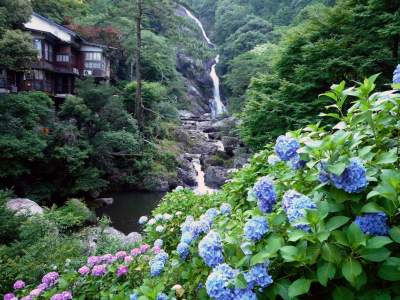
Saga Prefecture: Saga Prefecture, just west of Fukuoka, is a small area but with a very low population density and is best known for its concentration of porcelain and pottery production. During Japan’s two invasions into the Korean Peninsula in the late 16th century, they returned with about 30,000 Korean ceramic artists. These artists, who understood porcelain and chemical glazing, created the basis for Imari and Arita porcelains (colorful and shiny). The prefecture’s other notable attractions include: Yutoku Inari Shrine: One of the three best Inari shrines in all of Japan. Inari shrines are famous for their “tunnels” of bright orange shrine gates and their inari fox messengers (stone statue pairs). Yoshinogari Park: If you love archaeology then this is the best park in Japan to understand the Yayoi period (1,000-800 BC). Karatsu: This relaxing coastal city is best known for its castle and unique traditional pottery (as opposed to the porcelain wares of Imari and Arita).Takeo Onsen: Takeo hot spring town in western Saga Prefecture is over 1,300 years old. This hot spring’s waters are silky smooth due to their high sodium bicarbonate content. waters feel silky smooth on skin thanks to a high concentration of sodium bicarbonate. Today, tourists can enjoy Takeo Onsen at several public bathhouses located near the town's iconic Sakura-mon, a two-storied, red-lacquered gate.
Nagasaki Prefecture: Nagasaki: Nagasaki offers foreign tourists a wide range of historical attractions, most of which relate to the city’s history as the only entry point to Japan for the Portuguese and Dutch traders who were forced to operate from Dejima island or port waters offshore. The historical core of the city, luckily, was not wiped out like Hiroshima by the atomic bomb. And just south of the city lies the relaxing and scenic Nomo Peninsula with a few resort island just off the coast. Shimabara Peninsula: The Shimabara Peninsula is a popular hot spring and hiking destination east of Nagasaki City with volcanic and active Mount Unzen at its center. Hirado: Hirado island in northwestern Nagasaki Prefecture is an off-the-beaten destination today. The island served as the trading post of the Dutch East India Company during the early Edo Period until the company's operations were moved to Dejima in the port of Nagasaki.
Kumamoto Prefecture: Kurokawa Onsen: One of Japan’s most attractive and expensive hot spring towns nestled into the western flank of the Kuju Mountains. There are not a lot of places for budget travelers in this town known for its high-end luxury ryokan complexes. Mount Aso: Mt. Aso in Kumamoto Prefecture is an active volcanic area consisting of several peaks which sit in one of the world’s largest calderas. And the only place in Japan where you can see an active volcano this close. Kumamoto: Modern Kumamoto is famous for its exceptional castle, friendly people and one of the best botanical gardens in the country. Amakusa: Made up of two big islands and hundreds of smaller islands, the Amakusa area is remote and rural. The three main islands, Shimoshima, Ueshima and Oyano, are interconnected and to the mainland with bridges, while ferries provide service to the smaller islands. Amakusa is lushly green with unique geological formations (the entire area is a national geopark) and also one of the few place you can see wild dolphins in Japan. Minamata: Minamata City overlooks the Amakusa Islands and is notable for being one of the worst polluted cities in Japan in the 1950s (from mercury poisoning) and probably Japan’s most progressive eco-city today. Its coastal location is very attractive and pristine (again!).
Oita Prefecture: Yufuin: This trendy, small, relaxing hot spring town just inland from Beppu is small and traditional and at the foot of Mount Yufuin (great hiking trails!). Yufuin is not as expensive as the Kurokawa hot spring town and, for many, offers a wider range of things to do and see. Beppu: Beppu is the biggest and most developed hot spring town in Japan and this means a lot of high-rise buildings. The hot springs are amazing, but the city is over developed and should be given at most a day or two on any Kyushu itinerary. Kunisaki Peninsula: The Kunisaki Peninsula, north of Beppu, faces the Seto Inland Sea. It has a range of lush valleys and low population farming areas that radiate from the central peak of Mount Futago. The peninsula is especially well known for its unique local Buddhist culture, a syncretic blend of Buddhism, Shinto, and Mikkyo mountain worship. Here you can see time-worn ancient temples and amazing Usa Shrine, Japan's "mother" Hachiman shrine. Hachiman is the divinity of archery and war. Kuju Mountains: This volcanic mountain range lies on the west side of Oita prefecture and offers exceptional hiking opportunities and a fantastic botanical garden complex. Usuki: Usuki, a former castle town, south of Beppu on the coast, is famous for its countless old stone Buddhas carved into cliffs. The town and its stone-paved streets are charming and historical, including a former samurai district.
Miyazaki Prefecture: Miyazaki Prefecture is known for beautiful it’s mountain and coastal scenery and warm climate. It is an area that most foreign travelers don’t explore and thus exceptional for off-the-beaten-track adventures. Highlight destinations in Miyazaki prefecture include: Takachiho Gorge: The Takachiho Gorge, Miyazaki’s most famous inland attraction, is known for its sheer volcanic basalt columns and the gorgeous 17m-high Manai waterfall. The gorge can be enjoyed by boat or via hiking trails. The area also has two spectacular ancient forest shrines, and the town is charming for visitors for shopping and relaxing. Udo Shrine: Udo Shrine, on the Nichinan Coast south of Miyazaki City, is dedicated to the father of Emperor Jimmu, Japan’s mythical first emperor. The brightly painted shrine is in a cave on the side of a cliff above the sea.
Kagoshima Prefecture:Kagoshima Prefecture, at the southern tip of Kyushu, is famous all over Japan for its active volcano on the edge of Kagoshima City, the islands south off the coast and a fair bit of nature and outdoor culture including amazing gardens. Yakushima: Yakushima is a subtropical island famous for its amazing moss covered yakusugi cedar forest, some trees are more than 7,000 years old. The island has high deer and monkey populations. The Studio Ghibli animated film Princess Mononoke used the most exotic part of the island, Shiratani Unsuikyo Ravine, as a model for the enchanted forest in the anime film. Tanegashima: During the Muromachi period (1336-1576), Tanegashima functioned as a relay station on one of the main Chinese trade routes. In 1543, the Portuguese landed on the island and introduced European muskets or early rifles to the Japanese in 1543, along with soap, tobacco, and other unknown European goods. Less than 50 years later, Japan was manufacturing its own firearms and castle design changed to deal with these new weapons. Kirishima: Kirishima is an active volcanic mountain range that lies on the border between Miyazaki and Kagoshima Prefectures. It is made up of mountains, highlands, volcanic lakes and hot springs and offers good hiking through beautiful mountainous surroundings. Due to a recent eruption by Mount Shinmoedake some of the hiking trails are currently closed. The mountains of Kirishima play an important role in Japanese mythology. They are said to be the site where the god Ninigi no Mikoto, grandson of the sun goddess Amaterasu, was sent to rule over the earth and establish the lineage of Japanese Emperors. At the top of Mount Takachiho-no-mine you can see the spear sunk in the mountaintop, which Ninigi no Mikoto used to descend to earth. Satsuma Peninsula: The Satsuma Peninsula extends about 50 kilometers south from Kagoshima City, making up the southwestern section of Kagoshima Prefecture. Named after the former Satsuma feudal domain (roughly equivalent to modern day Kagoshima Prefecture), the peninsula offers a mixture of hot springs, subtropical natural attractions and cultural sites.
- Kyushu private travel transportation and accommodation overview
- Kyushu main hiking, nature and hot spring destinations
- Kyushu food & cuisine overview for private travel
- Kyushu history overview
Kyushu food & cuisine overview for private travel
Kyushu is made up of seven prefectures (Fukuoka, Saga, Nagasaki, Oita, Kumamoto, Miyazaki, and Kagoshima) and each of these prefectures is known for distinctive foods and cuisine options. Many of the most popular Kyushu prefectural dishes can be found in major cities of Kyushu if you know what to look for.
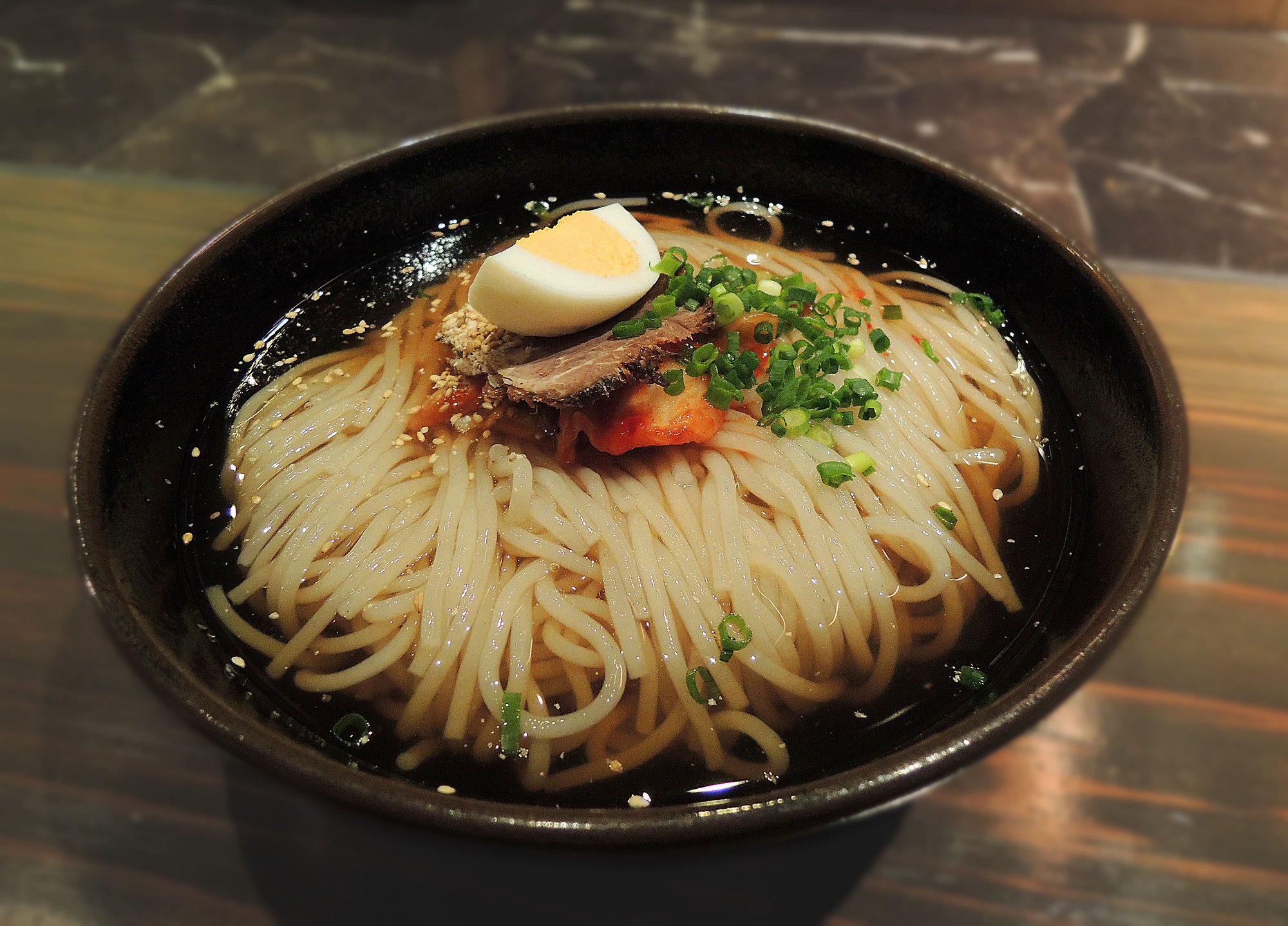
Fukuoka Prefecture cuisine and food specialties:Fukuoka Prefecture is best known for its "giant" strawberries, ramen soups and noodles, pork, chicken, beef, and horumon and motsu “guts” cuisine. Fukuoka is known throughout southeast Asia, especially in 5-star hotels and high-end restaurants, for their famous brand name “Amaou” and “Hakata Toyonoka” strawberries. There is also an abundance of seafood products here as it faces bodies of water such as the Genkai Sea and Suonada Sea. Fukuoka's pork bone ramen noodles are especially well known and popular. The broth of this flavorful ramen is made by boiling pork bone for hours and hours. Kurume ramen, also from Fukuoka, is also very popular and the broth is lighter. Fukuoka is also a center for dishes made with the guts of pigs and cows and is known as horumon or motsu cuisine. Motsunabe is made by boiling intestines (motsu) with vegetables. These dishes originated in Fukuoka but are now available all over Japan.
Saga Prefecture cuisine and food specialties: Ancient Saga Prefecture with access to big open waters is famous for its seafood harvest and also its local high-end beef (Saga-gyu). Popular and tasty seafood catches in Saga include turban shells, clams, crab, local shrimp and sea bass. Hamayaki char-grilled turban shells and oysters are a local favorite that many foreign travelers love. In the world of top-quality beef (remember Kobe beef is just one kind of Japanese marbled beef), Saga Prefecture's Saga-gyu steaks, black beef, is prized for its soft texture and fine marbled fat.
Nagasaki Prefecture cuisine and food specialties: Nagasaki Prefecture was the Western gateway to Japan long before Tokyo took over, and for that reason it has a very diverse range of foods and cuisine styles. Shippoku ryori, Nagasaki's 400-year-old cuisine, combines Japanese, Chinese, Dutch and Portuguese cuisine themes. Served on big communal food platters shared at a round table, usually in high-end traditional ryotei settings. The menu usually comprises a soup, baked seafood or meat, boiled vegetables with tofu and mushrooms, fried vegetables, rice or sushi and desserts. Shippoku dishes include everything from appetizers and main dishes to desserts. Chanpon noodles are also from Nagasaki. Great for a quick lunch or a filling inexpensive dinner. Chanpon is a boiled ramen noodle soup dish that generally includes fried pork slices, seafood and vegetables in a thick lard-based broth (made from chicken and pork bones). Some restaurants serve chanpon topped with shrimp, oyster or shredded omelet. Goto udon, hand-made chewy udon noodles from the Goto Islands, with more than 1,000 years of history.
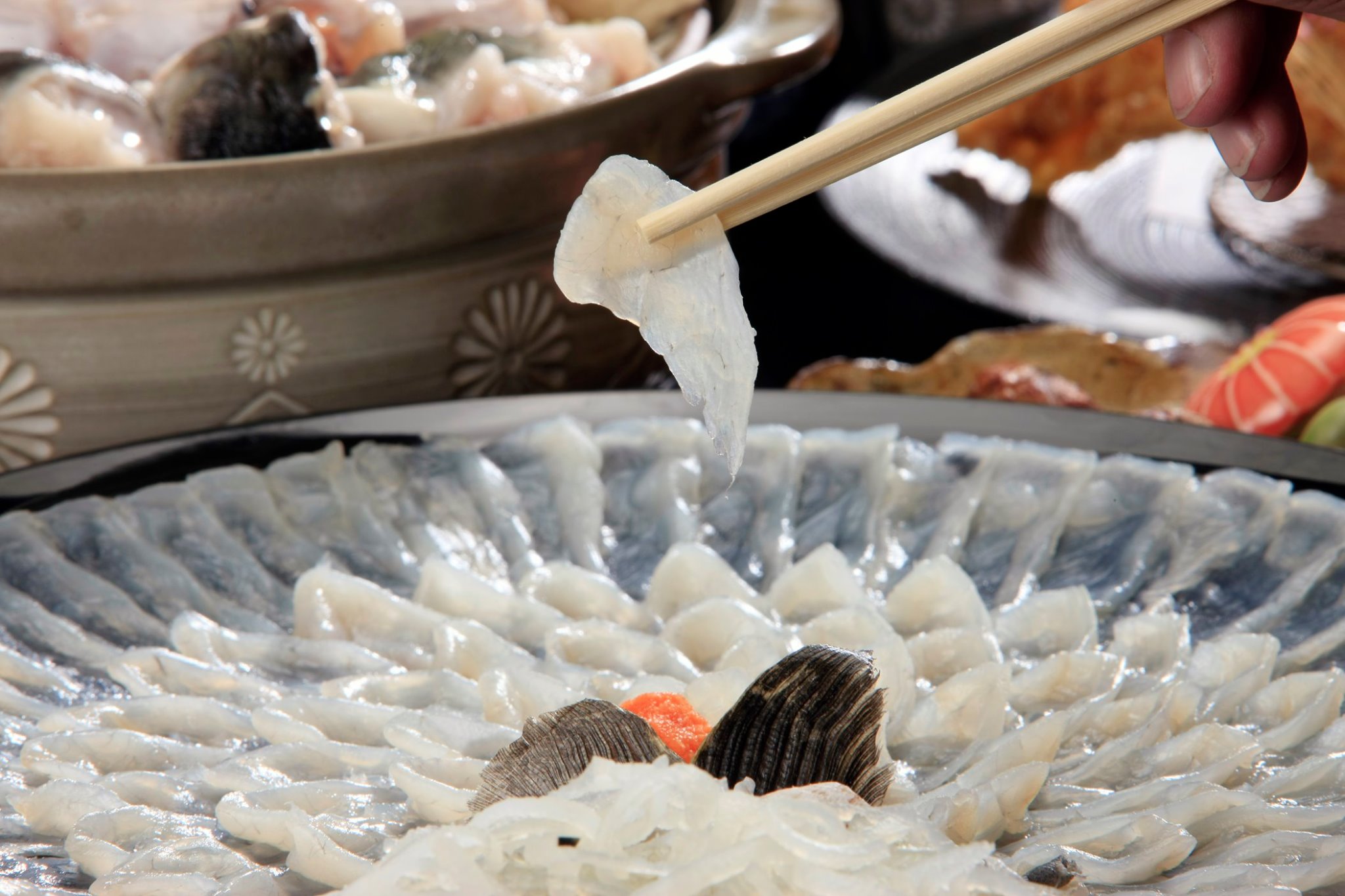
Oita Prefecture cuisine and food specialties: Oita Prefecture is blessed with fresh ingredients famous all over Japan including the local seki aji and seki saba mackerel fish delicacies, some of the best local chicken cuisine and Bungo beef (think Kobe beef!). Fugu blowfish cuisine is an Oita Prefecture specialty that consists of Tiger fugu (puffer fish) served as thick sashimi slices. Can also be deep fried (fugu karage) or in a rice porridge (fugu zosui). Karage (deep-fried chicken) has its original roots in Oita but is now popular all over Japan. Made with chicken flavored in a soy sauce marinade seasoned with garlic and ginger. But many local versions are to be found and the best places to start eating karage is in an izakaya or "family restaurant." Toriten is top-quality Oita chicken cut into large chunks, covered with a tempura coating and deep fried until the outside is crispy. Dipped in citrus ponzu sauce or hot karashi mustard sauce. Oita's dumpling soup is both a restaurant dish and something commonly served at home. The dumplings, made from wheat flour, are called hocho. Dumpling soup broth is miso based and the dish is cooked with vegetables including taro, carrots, mushrooms, and burdock (gobou). Beppu City’s ancient jigokumushi cuisine (hell steaming) uses steam from Beppu's famous local hot springs to cook seasonal vegetables and local fish and the hot spring minerals add to the flavor.
Kumamoto Prefecture cuisine and food specialties:Kumamoto is ideally located on the sea and inland there are fertile fields and livestock everywhere you look. Karashi-renkon is a local Kumamoto dish in which lotus root is cut and then the holes are filed with a mustard, miso paste and honey paste. Covered in batter the lotus pieces are deep fried in oil. Takamori-dengaku skewered cuisine has been on the local menu for 900 years or more. Skewered ingredients include taro potatoes, tofu, salmon and meats are first seasoned with sansho pepper and then covered in yuzu-flavored miso and charcoal grilled on a sunken hearth. Basashi raw horse meat is a Kyushu specialty and Kumamoto is the best place to try it. The meat is grilled on a metal plate and then, when served, dipped in vinegar sauce or soy sauce mixed with ginger, or with wasabi horse radish believe it or not! Dangojiru stew or thick soup is something vegetarians and vegans can safely enjoy. The ingredients are noodles, mushrooms, spring onions, carrots, burdock root, etc.
Miyazaki Prefecture cuisine and food specialties: Miyazaki Prefecture is a land with a prosperous farming and poultry industry. Local ingredients that stand out include hyuga kabocha pumpkin, hyuganatsu citrus fruit, mangos (believed or not), black beef, and local specialty charcoal grilled chicken. Miyazaki chicken-nanban is battered chicken that is deep-fried in oil, flavored with sweet vinegar sauce, and served with tartar sauce. These juicy chicken chunks have a sweet and sour flavor. The southern part of Miyazaki Prefecture is where the most line-caught bonito mackerel (or skipjack tuna) is caught year in and year out. The local bonito is seared to perfection on a mesh grill over charcoal or gas, seasoned with salt, and various sauces. Hiyajiru, Miyazaki's traditional cold soup, an old local farming tradition, has a thick fish paste and miso broth topped with tofu and cucumber and poured over hot rice. This refreshing dish is especially suited to warm or hot days.
Kagoshima Prefecture cuisine and food specialties: Kagoshima Prefecture is home to one of Japan's biggest and best-known livestock industry, especially famous for black pork, imo sweet potatoes, and shochu alcohol made from sweet potatoes. Satsuma-imo (sweet potato) are everywhere you look in Kagoshima: in ice cream, fried and baked. Kurobuta black pork isn't black but the pigs it comes from are. This pork is super juicy and is prepared in many ways (deep-fried cutlets, steamed pork buns, in ramen, and pan fried as steak). Satsuma-age fish cakes are made from ground fish meat deep-fried in oil. Generally, these fish cakes are mixed with vegetables and local seasonings. Tobiuo flying fish is also on the menu in Kagoshima. It can be baked, fried or eaten as sashimi. The entire fish, head, wings and all can be eaten.
- Kyushu private travel transportation and accommodation overview
- Kyushu main hiking, nature and hot spring destinations
- Kyushu food & cuisine overview for private travel
- Kyushu history overview
Kyushu history overview
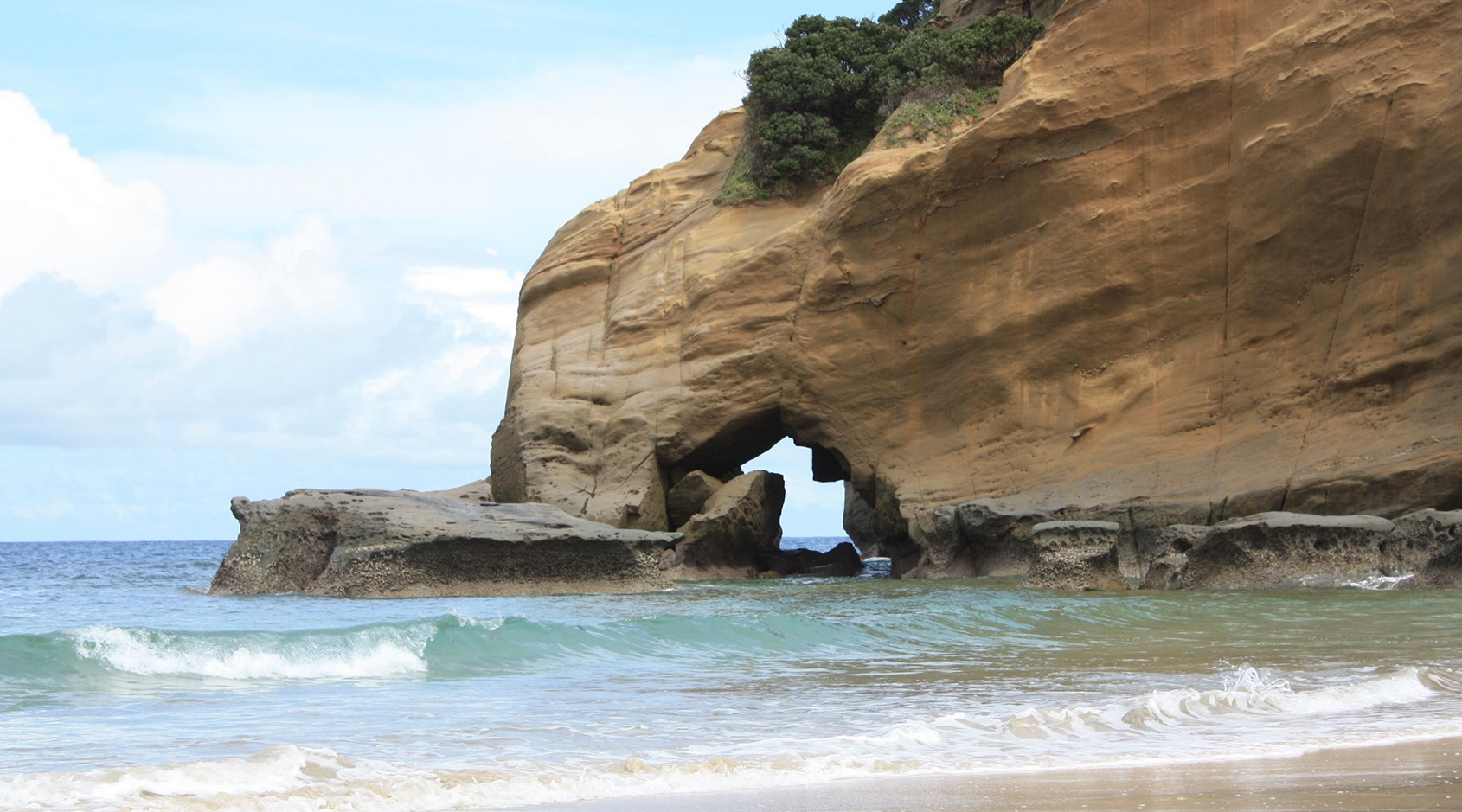
The northern edge of the island is less than 120 km (75 miles) from the southern tip of the Korean Peninsula. And the Nagasaki area is only 500-600 km (310-375 miles) from the Shanghai area. These are very short distances for curious sailors. And long before Chinese and Korean culture revolutionized Japan, people from southeast Asia had settled on Kyushu: people likely from the Pacific, Taiwan, and the Philippines. Kyushu’s proximity to China and South Korea made it a gateway for cultural, artistic, and religious influences from Asia and, later, for contact with the West. The Yamato people, who are considered to be the ancestors of nearly all Japanese people today, began their northward movement from southeastern Kyushu. Kyushu’s history is notable for three other unique contributions to the overall history of Japan: 1. The oldest pottery in the world was first made in Kyushu. 2. Kyushu was the absolute center of Japan’s first interactions with European powers: first the Portuguese and then the Dutch (Dejima). 3. The Satsuma feudal lords with the lords of Kochi basically overthrew the Tokugawa Shogunate in 1867 restoring power to the emperor.
According to Japanese mythology, Ninigi, grandson of the Sun Goddess, Amaterasu, was one of the first "deities" to descend to Japan at Mt. Takachiho (Kyushu, Miyazaki Prefecture). Ninigi is arrived with three powerful objects, gifts of the Sun Goddess: the sword (symbol of courage), the mirror (symbol of purity), and unique jewels (symbol of good). These three objects though lost in time are still today the symbolic regalia of the Japanese Imperial Family. Ninigi's great grandson, Jimmu, is considered to be the first of Japan's long line of emperors.
The oldest and most extensive ancient archaeological sites in Japan lie in the northwest corner of Kyushu, in Saga Prefecture and Fukuoka Prefecture. The first human habitation in these areas dates to roughly 30,000 BC. First came the Jomon period (13,000-1,000 BC), named after its cord-marked pottery, which was followed by the Yayoi period (1,000-800 BC) when new technologies were introduced from continental Asia. The first known written reference to “Japan” appears in the Chinese Book of Han in the first century AD.
During the subsequent Kofun period (250–538 BC) much of western Japan was unified under the Yamato court which was founded in Kyushu and then “migrated” to the Nara-Osaka-Kyoto area where the next 1,500 years of Japanese history mostly took place.
The symbol of the growing power of Yamato court were the kofun burial mounds they constructed from around 250 AD onwards. Most of Japan’s earliest Kofun burial mounds were built in northwest Kyushu.
Kyushu was almost successfully invaded twice by the Mongols in 1274 and again 1281. In 1274, Kublai Khan’s Mongol and Korean army invaded Kyushu. The Mongols managed to occupy a portion of Hizen province (present-day Saga prefecture) when a terrible storm destroyed most of their ships and forced them to retreat. In the second invasion in 1281, the Japanese were much better prepared, but the force was 2.5 times bigger than the first invasion: 100,000 soldiers in all. But once again the Japanese were favored by bad weather and the Mongols lost 200 more ships and retreated again to Korea. Today, we know the word kamikaze from its WWII references but the original meaning “Divine Wind” was coined to celebrate how both Mongol invasions were ended almost before they started.
In the late 16th century, Toyotomi Hideyoshi, the powerful warlord and almost shogun, invaded Korea twice from Kyushu: in 1592 and in 1597. The conflict ended in 1598 under a stalemate and the Japanese withdrew from Korea. But when they retreated, they kidnapped about 35,000 Korean ceramic artists and settled them in the Imari Arita area of Kyushu. At this time the Japanese, who had first invented pottery in Kyushu, before anywhere else in the world, didn’t understand how to make glazes. The Korean ceramic artists did, and this changed Japanese ceramics from then one with the addition of vibrant colors and detailed motifs.
Japan's first recorded contacts and most subsequent interactions with European cultures also occurred in Kyushu. In 1543, three Portuguese merchants were blown off course and accidently landed at Tanega-shima, an island just off the tip of Kagoshima. This one ship was the beginning of firearms (muskets) in Japan which also completely revolutionized castle fortress designs across Japan over the next 60 years. Then in 1549, St. Francis Xavier came to Japan via Kyushu to spread the word of the Catholic Church (he went all the way to Kyoto!). And until the early 17th century many Portuguese missionaries “worked” in Kyushu and in most of Western Honshu. But in 1637, belief in Christianity became a crime. During the Kyushu Shimabara battle in that same year over 40,000 Christian Japanese people were killed. As a result, Christianity almost vanished but did manage to continue in part as an underground religion.
Nagasaki, the chief port of Kyushu in pre-modern times, was the first Japanese port to engage in Western trade. Nagasaki was the only link to the outside world for all of Japan during the Tokugawa shogunate (1603-1868). Actually, the small group of Dutch, Chinese, and Korean traders were not permitted free entry to Nagasaki itself: instead they lived on the tiny island of Dejima in the Nagasaki harbor. Until the Westernization of Japan from 1868 onward (the Meiji period) nearly all students, intellectuals and artists anywhere in Japan got their “outside” world knowledge exclusively via the Dutch and other foreigners on Dejima.
At the end of the 19th century, when Japan opened up to the West, Kyushu was in a unique position to profit from increased foreign trader and military vessels in their coastal waters. And the southwestern part of the island, along with the rebellious samurai clans of Shikoku, literally overthrew the Tokugawa shoguns in Edo (Tokyo) and restored the emperor to power (the Meiji Emperor). This was the Meiji Restoration and Kyushu (together with Shikoku) made it happen! The hero of the Kyushu rebels was the colorful samurai Saigo Takamori (1827 – 1877). The admiral of the Japanese Imperial Fleet (navy), Togo Heihachiro (1848 – 1934), that annihilated the Imperial Russian Baltic Fleet in the Russo-Japanese War of 1905, was also from Kagoshima, And since the 1970s the most macho men in Japan have been called the kyushudanjiri or the dudes of Kyushu.
- Kyushu private travel transportation and accommodation overview
- Kyushu main hiking, nature and hot spring destinations
- Kyushu food & cuisine overview for private travel
- Kyushu history overview
Learn more about Japan’s main islands with these links
Content by Ian Martin Ropke, owner of Your Japan Private Tours (est. 1990). I have been planning, designing, and making custom Japan private tours on all five Japanese islands since the early 1990s. I work closely with Japan private tour clients and have worked for all kinds of families, companies, and individuals since 1990. Clients find me mostly via organic search, and I advertise my custom Japan private tours & travel services on www.japan-guide.com, which has the best all-Japan English content & maps in Japan! If you are going to Japan and you understand the advantages of private travel, consider my services for your next trip. And thank you for reading my content. I, Ian Martin Ropke (unique on Google Search), am also a serious nonfiction and fiction writer, a startup founder (NexussPlus.com), and a spiritual wood sculptor. Learn more!